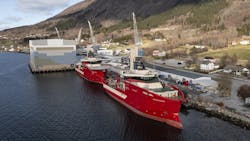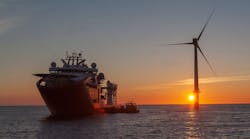By Jen Redman, North Star
The offshore wind sector is scaling rapidly, and with that growth comes an increasing climate responsibility. Working within the industry, it is clear that bridging the gap between net-zero ambitions and operational delivery is far from straightforward. The path is complex, fragmented and goes well beyond a simple tick-box exercise. To meet the moment, the industry must shift decisively from strategy to action, ensuring that we’re not only setting ambitious goals but also making tangible, measurable progress toward decarbonization.
Delivering real-world decarbonization
Operating in one of the most emissions-intensive sectors in energy creates both a challenge and a responsibility. Decarbonizing offshore logistics isn’t about abstract future fuels, it is about what we can retrofit, integrate and scale right now. That includes hybrid propulsion, alternative fuels, energy management systems and behavior change driven by innovative digital tools.
These technologies optimize vessel performance, reduce fuel consumption through real-time data insights and enable predictive maintenance to minimize unnecessary emissions.
North Star’s recent ESG report shared a reduction in carbon intensity by 18% since 2022 and the introduction of a self-defined emissions intensity metric (CO2/GRT) to address the absence of sector-specific benchmarks for offshore wind logistics, a blind spot and a risk to comparability.
If we don’t measure consistently, we can’t decarbonize effectively, which is why we’ve chosen to act and encourage others to do the same.
Designing for fuels that don’t exist (yet)
One question the sector faces isn’t whether to build low-carbon ships, it is how to build vessels today that are ready for fuels that don’t exist at commercial scale.
One of the main hurdles is that global production of alternative fuels remains limited, with supply concentrated in a few geographic regions and projects still in early commercial phases. Competition from aviation and heavy industries further strains availability and long-term supply security.
Additionally, the economic challenge remains: alternative fuels are still significantly more expensive than conventional marine fuels.
This is why strategic partnerships with alternative fuel producers and projects are vital. There is also active exploration into infrastructure development at key ports and offshore wind sites.
Solving the energy trilemma of security, cost and carbon will require flexible design, scalable technology and, most importantly, collaboration.


